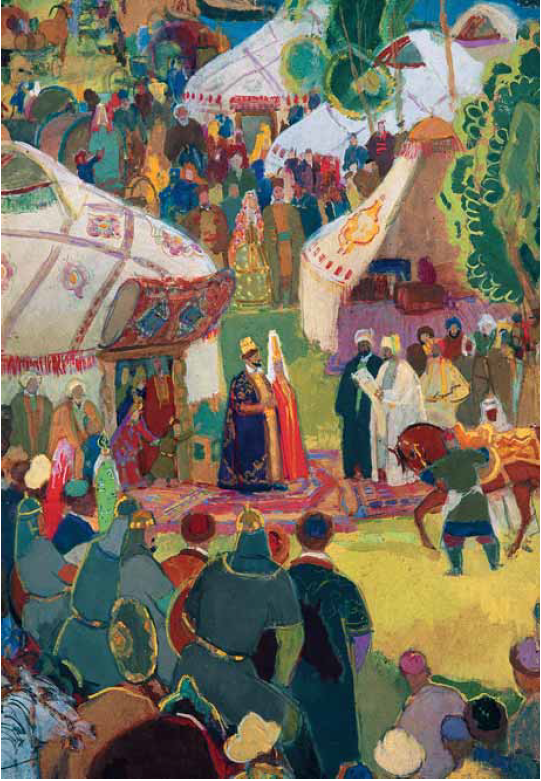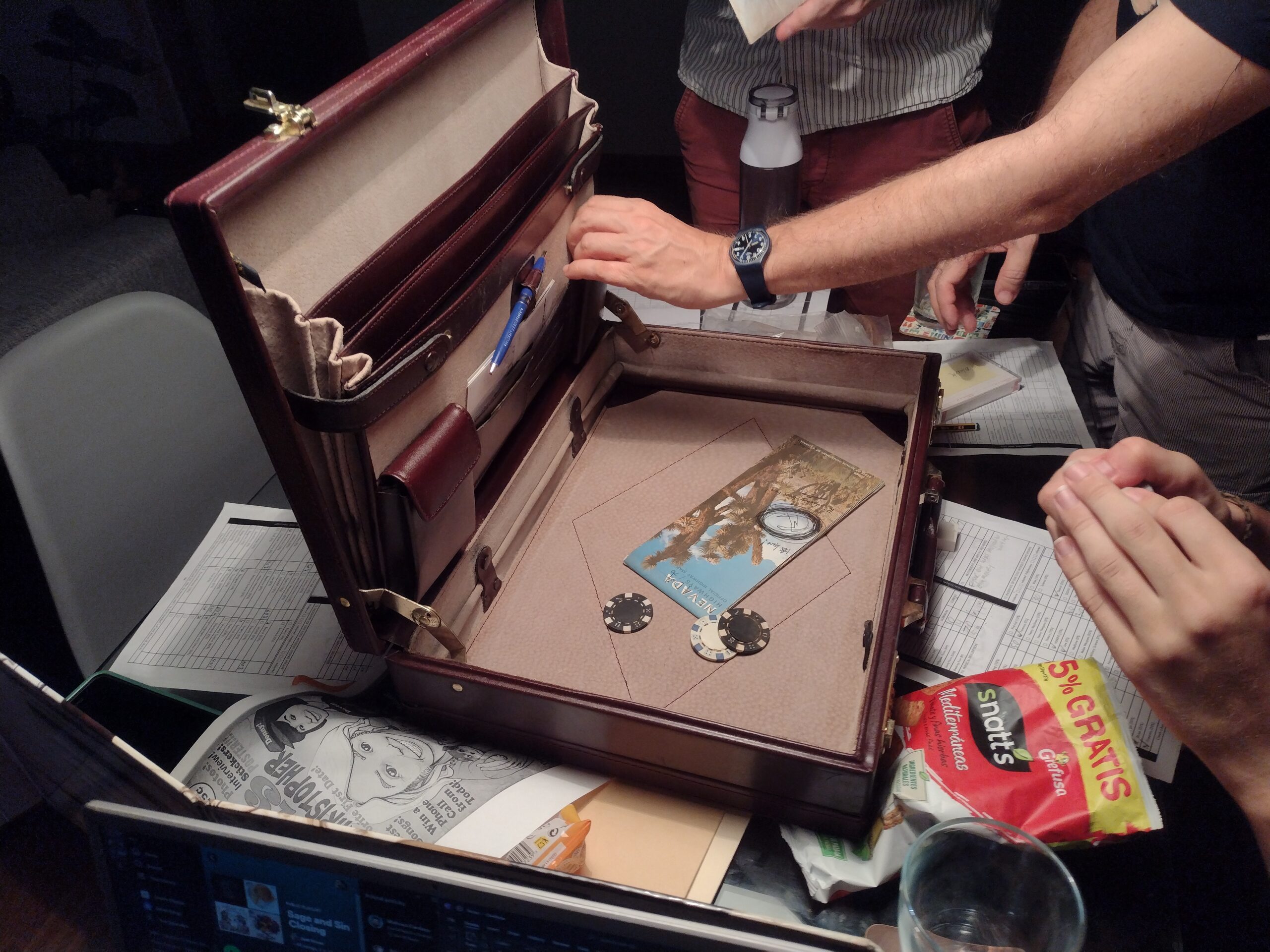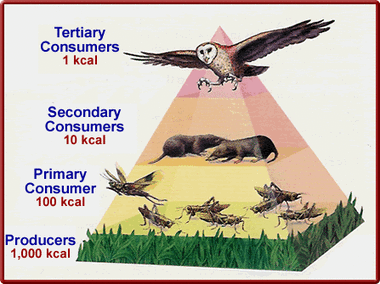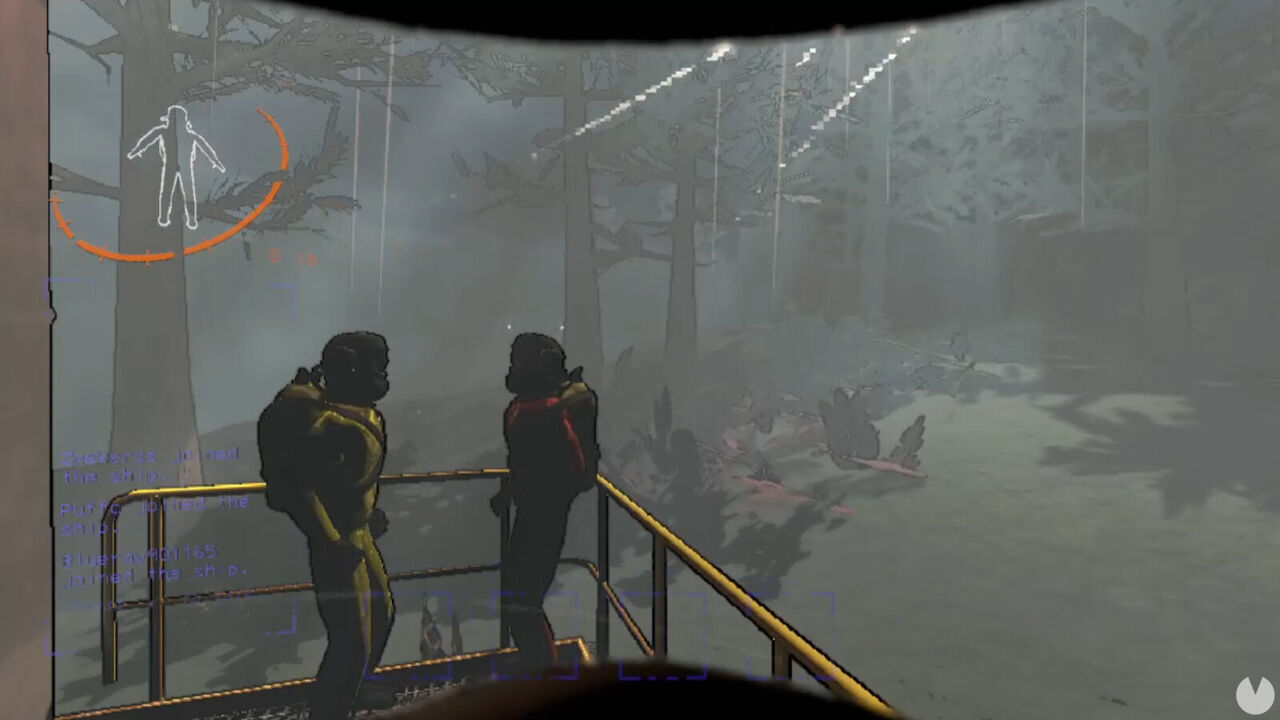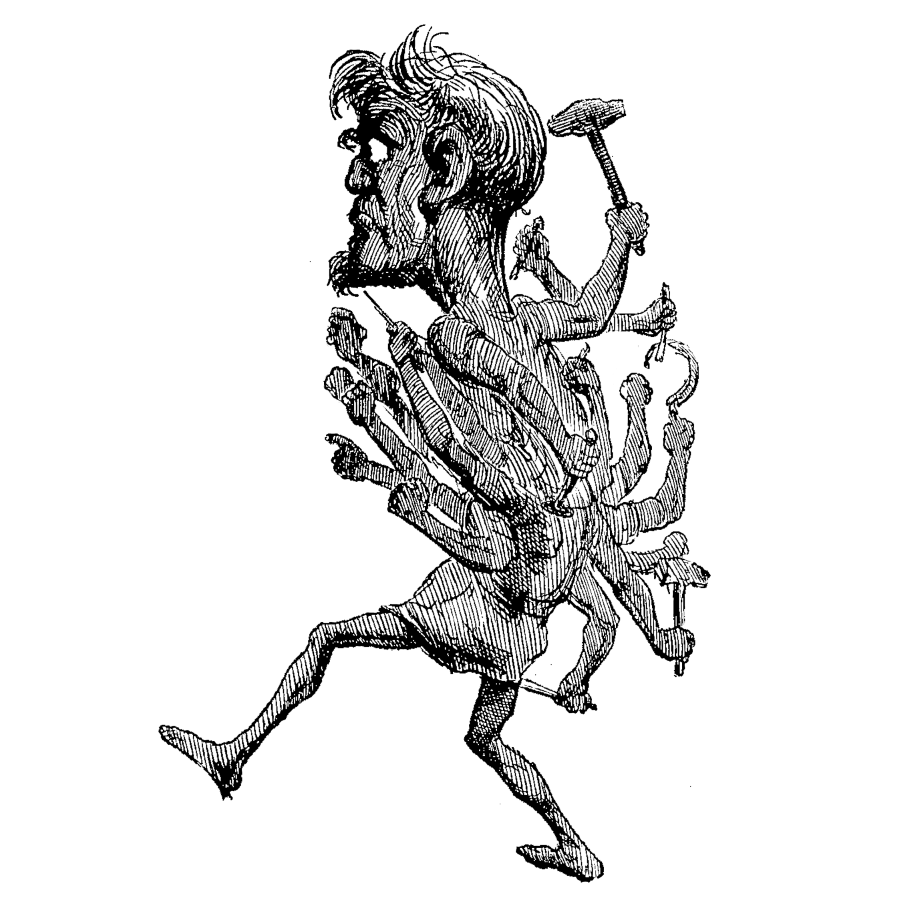
Apparently this is the year of the beta release. I ran a campaign using Mothership house rules I called Beyond Iskander’s Gate for 6 sessions that I canceled due to scheduling issues. But 10th century Central Asia is so rad and deeply underhyped as a setting for fiction and gaming and learning about the workings of Volga Bulgars, Khazaria, the Abbasid Caliphate, The Byzantine Empire, The Rus (Vikings make everything cooler) and their relations with each other kept me interested for months. Shifting frontiers between societies make some of the best RPG historical settings. Cultural variety and political instability are the bread and butter for a party of ambitious misfits with questionable ethics looking for adventure. Adding some paranormal events to the mix is even more fun.
My favorite source for this campaign was “Penguin Classics Ibn Fadlān and the Land of Darkness: Arab Travellers in the Far North” is the most gameable primary source. This review from False Machine really showcases the crazy inspirational value for the RPG enjoyer.
Campaign Overview
The year is 923. The Islamic world thrives in an age of science, law, and cosmopolitan splendor, though the Abbasid Caliphate’s political power wanes beneath the gilt surface.
You are members of the Ikhwān Al-Ṣafā, the Brethren of Purity—a secret order of scholars from Baghdad, devoted to uncovering the universal truth through every field of knowledge, including the occult.
Your mission: Investigate the truth of a mysterious letter from Ibn Fadlan, a member of the order and the caliph’s ambassador to the Volga Bulgars, where he describes the bones of a giant in the northern woods. You’ve just arrived at the great Persian city of Bukhara after months of travel and have months left before your caravan will arrive in the recently converted land of the seminomadic Bulgars, where the riches of the fur and slave trade have grown their influence in the region.
Some learned scholars in Baghdad claim these lands lie beyond the Iron Gates built by Iskander the Great, said to hold back the forsaken barbarian tribes of Gog and Magog until the Day of Judgment.
Beyond Iskander’s Gate Character Creation for Mothership
Turn from the sleep of negligence and the slumber of ignorance, for the world is a house of delusion and tribulations.
-from the Ikhwan al-Safa, or Encyclopedia of the Brethren of Purity
“The most merciful thing in the world, I think, is the inability of the human mind to correlate all its contents. We live on a placid island of ignorance in the midst of black seas of the infinity, and it was not meant that we should voyage far.”
― H. P. Lovecraft
- Roll Stats: Strength, Speed, Intellect, and Combat at 2d10+20 each.
- Roll Saves: Sanity, Fear, Body at 2d10+20 each.
- You have 2 Wounds with 1d10+10 Health each.
- Choose a Background (Class) from the list or create one.
- Write down the Skills from your Background and their bonus percentage to your rolls using them.
- Roll on the party relationships table to figure out your character’s relationship with the character of the player sitting to your right, write it down. Reroll if either of you want.
- You start with 100 silver dirhams each, a brass medallion with a dove on it, and 5 pieces of personal equipment you could get in 923 AD Baghdad. Your caravan has enough food. Everyone speaks Arabic.
- Let’s go on a journey together.

Backgrounds
Astronomer
Navigate (+30%)
Mathematics (+20%)
Occult (+20%)
Foreign Lands (+10%)
Language (+10%)
Esoteric Scholar
Occult (+30%)
Alchemy +20%
Language +20%
History+10%
Religion +10%
Geographer
Foreign Lands +30%
Navigate +20%
History +20%
Natural World +10%
Language +10%
Survival +10%
Islamic Jurist
Religion (+30%)
Bureaucracy (+20%
History (+20%)
Occult (+10%)
Underworld (+10%)
Historian
History +30%
Foreign Lands +20%
Language +20%
Language +10%
Bureaucracy +10%
Market Inspector
Bureaucracy (+30%)
Language- Pick One (+20%)
Underworld (+20%)
Religion (+10%)
Disguise (+10%)
Language (+10%)
Siege Engineer
Siege Weapons (+30%)
Construction (+20%)
Mathematics (+20%)
Military Tactics (+10%)
Navigate (+10%)
Hermit or Mystic
Occult (+30%)
Religion (+20%)
Natural World (+20%)
Survival (+10%)
Foreign Lands (+10%)
Poet or Musician
Art (Poetry or Music) (+30%):
History (20%)
Language- (+20%)
Foreign Lands (+10%)
Religion (+10%)
Doctor
Medicine (30%)
Bureaucracy (20%)
Natural World (20%)
Religion (10%)
Language (Greek) (10%)
Merchant
Bureaucracy (+30%)
Foreign Lands (+20%)
Language (x) (+20%)
Ride (+20%)
Art (Poetry) +10%
Blacksmith
Craft- Blacksmith (30%)
Mathematics (+20%)
Athletics (+20%)
Art (Engraving) +10%
Melee Weapons +10%
Laborer
Athletics (+30%)
Construction (+20%)
Survival (+20%)
Underworld (+10%)
Bureaucracy (+10%)
Thief
Underworld (+30%)
Disguise (+20%)
Atheletics (+20%)
Melee Weapons (+10%)
Swim (+10%)
Caravan Guard
Melee Weapons (+30%)
Foreign Lands (+20%)
Ranged Weapons (+20%)
Ride- (+10%)
Language- Pick One (+10%)
Brigand
Ranged Weapons (+30%)
Melee Weapons (+20%)
Streetwise (+20%)
Medicine (+10%)
Ride (+10%)
Officer
Military Tactics (+30%)
Beaucracy (+20%)
Ride (+20%
Melee Weapons (+10%)
Language-Pick One (+10%)
Ghilman (former slave soldier)
Melee Weapons (+30%)
Ranged Weapons (+20%)
Military Tactics (+20%):
Foreign Lands (+10%)
Language- Pick One (+10%)
Hunter
Ranged Weapons (+30%)
Survival (+20%)
Natural World (+20%)
Navigate (+10%)
Melee Weapons (+10%)
Sailor
Pilot (+30%)
Navigate (+20%)
Swim (+20%)
Foreign Lands (+10%)
Melee Weapons (+10%)
Language- Pick One (+10%)
Create Your Own?
1 Master Skill +30,
Two Expert Skills +20,
Two Trained Skills +10,
Skills List
Alchemy
Ride
Mathematics
Foreign Lands
Siege Weapons
Art (x)- Poetry, Music, etc
History
Survival
Athletics
Medicine
Bureaucracy
Melee Weapons
Swim
Military
Tactics
Craft (x)- Blacksmithing, Weaving etc
Navigate
Language (x)- Greek, Persian, Latin, Turkic, Slav, Rus, Hebrew, Chinese
+10% is basic, +20% conversational, +30% fluent.
Criminal
Occult
Construction
Disguise
Pilot
Ranged Weapons
Natural World
Religion
Any skill can be known at a Master level +30, Expert level +20, or Trained level +10.

Party Relationship Types 1d5 Table (Inspired by Fiasco)
Everyone goes around table to roll to determine their relationship with player’s character to the right.
Type of Relationship
- Family
- Romance
- Society
- Crime
- Friendship
1. Family
1. Siblings. Blood or Foster
2. Parent and Bastard
3. Cousins
4. Parent and Child
5. Uncle/aunt and nephew/niece
2. Romance
- Spouses, loveless
- Forbidden lovers
- Divorced spouses
- Rivals for the same heart
- Spouses, committed
3. Society
- Rival palace courtiers
- Poet and patron
- Slave and master
- Teacher and student
- Foreigners
4. Crime- Banu Sasan
- Charlatan and Assistant
- House breakers
- Assasin and former target
- Former Brigands
- Opium dealer and habitual user
5. Friendship
- Wine drinking buddies
- Comrades in arms from the war
- Childhood friends
- Met on the Haj
- Friendly rivals in all things
Some Entries from the Real Journal of Ibn Fadlan
A giant
Tikīn told me that in the king’s lands there was a man of extraordinary size. When I arrived
in that country, I asked the king about him.
‘Yes, he was living in our country,’ he told me, ‘but he is dead. He was not one of our
people, nor was he an ordinary man. His story is as follows. One day some merchants set out
in the direction of the Itil River as they were in the habit of doing. The river was in flood
and had broken its banks. A day had scarcely passed when a group of these merchants came
to me and said: ‘“O king, we have seen a man swimming on the waters a man of such a kind that if he belonged to a people dwelling near us there would be no place for us in these lands, but we would have to emigrate.”
‘I set out on horseback with them and reached the river. I found myself face to face with
the man. I saw that judging by the length of my own forearm, he was twelve cubits tall. He
had a head the size of the biggest cooking pot there ever was, a nose more than a span long,
huge eyes, and fingers each more than a span in length. His appearance frightened me and I
had the same feeling of terror as the others. We began to speak to him, but he did not speak
to us and only stared. I had him taken to my residence and I wrote to the people of Wīsū,
who live three months’ distance from us, to ask for information about him. They wrote to
me, informing me that this man was one of the people of Gog and Magog.
Gog and Magog
‘They live three full months from us. They are naked, and the sea forms a barrier between
us, for they live on the other shore. They couple together like beasts. God, All-high and All-
powerful, causes a fish to come out of the sea for them each day. One of them comes with a
knife and cuts off a piece sufficient for himself and his family. If he takes more than he
needs, his belly aches and so do the bellies of his family and sometimes he even dies, with all
his family. When they have taken what they need, the fish turns round and dives back into
the sea. They do this every day. Between us and them, there is the sea on one side and they
are enclosed by mountains on the others. The Barrier also separates them from the gate by
which they leave. When God, All-high and All-powerful, wants to unleash them on civilized
lands, He causes the Barrier to open and the level of the sea to drop and the fish to vanish.’
I questioned the king further about this man and he told me:
‘He stayed with me for a time, but no child could look at him without dropping dead and
no pregnant women without miscarrying. If he took hold of a man, his hands squeezed him
until he killed him. When I realized that, I had him hung from a high tree until he died. If
you want to see his bones and his head, I will go along with you and show them to you.’
‘I would like very much to see them,’ I answered.
He rode with me into a great forest filled with immense trees and shoved me towards a
tree under which had fallen his bones and head. I saw his head. It was like a great beehive.
His ribs were like the stalk of a date cluster and the bones of his legs and arms were
enormous too. I was astonished at the sight. Then I went away.
Some Entries from the Imagined Journal of Ibn Fadlan (Recovered by the Player Investigators In-Game)
Departure from Bulghar
I hired a crew of Rus, strong men well-versed in rivercraft, to take us down the Atil in their longship. Though pagans, they were skilled and reliable. We sailed toward the forest of the Samara Bend, drawn by the rumors of giants who still remain there by the bones of the one the king had brought me to see. The Rus disbelieved these rumors but have taken my coin to carry myself and Bars the Slav downriver. It is good and proper to seek to learn more about such wonders of Creation so that one may further increase their appreciation of the world and help others do so. The Atil was calm and cold, its waters guided us steadily toward the South for three day’s journey. It is in the land of the Burtas, a tribe opposed to the Bulghars and also subjects of the Khazars.
The Samara Bend and A Sighting
After arriving, we climbed the hills over the Samara Bend, our party reached a dense forest where the trees grew tall and close, their branches entwined. Many birds and animals dwell here but I am told no fur bearing animals live there and the land is rocky and hard so the Burtas do not often visit. As we ventured deeper into the forest, we heard a low thudding in the distance as the beating of a great drum. The sound grew, and with it, the earth seemed to tremble. We halted, peering through the thick undergrowth towards a wide trail, there we beheld the giants.
The four giants stood thrice the height of the tallest Rus, their limbs thick and heavy, their skin the color of stone.They wore no clothes to cover their nakedness, both their men and women. Their hair hung in matted locks about their shoulders. They seemed to possess great strength but little in the way of reason. Their faces were broad and heavy, with features like boulders.
One of the giants turned its head towards us but did not see. We took this as a sign and departed, careful to avoid making any sound. We did not stop until we had returned to our beached ship, giving thanks to Allah for our escape. I have been told that these are the people of Gog and Magog by the Bulghars. Bars said the Rus named them “jotun” and pressed upon us to leave as they think them eaters of man as the Bulghars do. I reminded them of the half payment of silver still awaiting them on my return and they relented
The Ritual
Bars and I disembarked with caution, leaving the longship along the shore. The Rus remained behind, their faces pale with fear, unwilling to follow into the dense forest. With Bars leading the way, we climbed the hills, moving through thick underbrush and towering trees following the trail of the giants until we came upon a clearing.
Four giants stood before an outcropping around a small cave entrance where a landslide had fallen from the cliff. We watched from the brush as the giants conducted a strange ritual. They each carried a slain deer in two great hands with the same ease as a man holds a chicken. With care, they took the deer’s blood in their hands and each dripped it over glyphs carved into the stone around the cave’s entrance placing each before setting the remains aflame with loud shouts much like words but like no tongue known to me. We waited until the giants had finished their work and left down their trail before we approached the cave.
The Cave and the Giants’ Return
Bars agreed to stand outside to watch so that we would not be caught and trapped in the cave without escape. The entrance to the cave through the ash and remains was not wide enough to admit the giants, and beyond it lay a wide carved passage that led deep into the earth. I followed it, a torch flickering on the walls, revealing more of the lined shapes etched into the stone.
The passage opened into a vast domed chamber, hewn from the rock by hands larger than those of men. The air was thick with musty scent, and the walls were lined with enormous white stone vats. Curious, I pushed with strain to remove the stone lid of one. Each was filled with a dark, viscous fluid. I leaned over one of the vats to peer inside, and something cold and sharp leaped forth and bit into my flesh. I recoiled, only to see a pale, writhing worm burrowing beneath my skin. I tried to remove it, but it was too deep, its movement sickening me as it squirmed in my veins. I was overcome with dread.
Before I could gather my thoughts, Bars let out a shout of warning. The giants had returned. Their awful voices echoed with rage. I left the cave and we took flight as the giants closed behind us.They were upon our heels before we could reach the thick forest where they would be slow.
They caught Bars, and rended him in their hands as one smashes a grasshopper. A true friend, his life snuffed out in an instant. I was blessed to enter a thick stand of trees as another came for me, unable to pass quickly. I barely reached the longship as the giants began hurling logs and boulders at us. The Rus, seeing the danger, had pushed off from the shore with haste and I had to wade through water to reach the ship in time. One of their number was struck and killed by a rock of great size. The longship rocked violently but was not overturned. I could do nothing but collapse overcome by exhaustion. We returned north, each day bringing us further from this darkness by the light of Allah’s grace.
Inspirations:
Ibn Fadlan in the Lands of Darkness by Ibn Fadlan and assorted other writers
The 13th Warrior directed by John McTiernan
Eaters of the Dead by Michael Crichton
Gentlemen of the Road by Michael Chabon
The Jews of Khazaria by Kevin Alan Brook
The Long Ships or Red Orm by Frans G. Bengtsson
Ikhwan al-Safa, or Encyclopedia of the Brethren of Purity
The Strain (Nocturna) by Chuck Hogan and Guillermo del Toro
The Assassin’s Creed Video Game Series
Against the Cult of the Reptile God by Douglas Niles
Silent Legions by Kevin Crawford
Armies of the Volga Bulgars Khanate of Kazan by Osprey Publishing
Legacy of the Bieth by Allandaros
Iron Gates Blog Series by Skerples,
Against The Wicked City by Joseph Manola
P.S: Beware of Overprepping
The problem with historical settings if you have a tendency to hyperfixate and overprep is that the well of lore you can draw from research is endless. It’s the same difficulty with running a game in a detailed preexisting setting like Star Wars or Tekumel x10000. If you’re a recovering overprepper like me you fall into old habits and your notes can start looking like this.

When you start researching primary sources to create an accurate price list for goods when you’re running a paranormal investigation style game without asking how your players experience will improve by being able to know the historically accurate relative worth of an ermine coat and a big jar of honey you may be in the throes of a hyperfixation and not prepping useful material for your next sessions adventures.
I need to get over my misplaced desire to do “historical justice” to representing the era and embrace the “good enough, let’s have some fun” vibe that good RPG historical settings can provide. Kevin Crawford, author of Stars Without Number and a bunch of related systems recommends a simple guiding principle for all RPG campaigns, but I’d say applies even more to historical campaign prep.
“Am I having fun? If you’re enjoying yourself, then
you can keep building. We follow this hobby because it’s fun, and if you’re enjoying the process then you
should let yourself have your indulgence.
Am I going to need this for the next session? If what you’re creating is something you know you’re going to need for the next game session, then you should finish it. Don’t let this feeling of obligation extend to every detail, however; it can be easy to imagine situations where you’ll need to elaborate some NPC or organization or location, but if you respond to every such possibility you’ll never get away from the drawing board. If you’re not having fun and you don’t need it for your next game session, stop it. You’re going to exhaust yourself on minutiae and trivia and not have the energy to do the parts you really do need, or the vigor needed to actually run this for the group.”
Good stuff to keep in mind.


